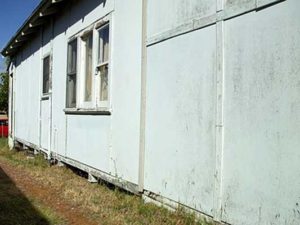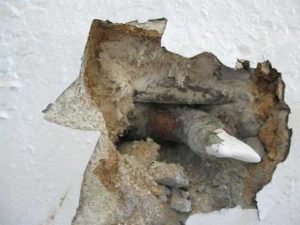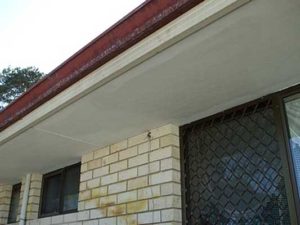Argh… sbestos
Your home is a safe haven for your family and yourself. Somewhere you can retreat to for a break from the outside world. It is warm, comfortable and most importantly, it’s safe. Or is it?
Asbestos is a dangerous substance that, unfortunately for us living in the present day, was a cheap and easy building material to get your hands on between the 1920’s and 1960’s. It was used largely to make dividing fences between suburban homes, and is present in approximately one third of all homes in Australia in some fashion, such as roofing, gutters, wall sheeting, carpet and tiling underlays to name just a few. In more recent years people have discovered the dangers of asbestos and stopped production and use.
Asbestos is a dangerous substance that, unfortunately for us living in the present day, was a cheap and easy building material to get your hands on between the 1920’s and 1960’s. It was used largely to make dividing fences between suburban homes, and is present in approximately one third of all homes in Australia in some fashion, such as roofing, gutters, wall sheeting, carpet and tiling underlays to name just a few. In more recent years people have discovered the dangers of asbestos and stopped production and use.

Asbestos wall lining the outside of a house.
So what’s the problem?
Asbestos poses a big health risk. This mainly applies to when maintenance or renovation is being done on your home, and on asbestos. When, for example, drilling a hole in a wall to hang up a painting, the fibres in asbestos become airborn, and if breathed in can cause serious damage to your respiratory system and in some cases has been known to cause death.

Example of frayed and broken asbestos. Notice the loose fibres.
Many of the homes that contain asbestos are old, the material will then we worn out and prone to fraying and spreading harmful fibres through the air without much effort.

Asbestos roof lining.
Ok, so we know what asbestos is, and that it can be pretty dangerous, but how do we spot it? And better yet, how do we get rid of it?
Unfortunately, most of the time it can be very difficult to identify asbestos in your home, as it looks very similar to other building materials such as polyethylene and talc fibres. If you are living in a home built in the 1960’s or 1970’s, it would be safe to assume that there is some asbestos present in your home.
The only sure way to know if your home contains asbestos or not is to get a professional to test the suspected materials in your home. Once identified, it is also recommended that you contact a professional, someone who is certified and licensed as an asbestos removalist, to safely remove and dispose of the asbestos and also give you advice on how to replace it with a safer material. If you wish to carry out the procedure of removing asbestos yourself, you want to make sure you have the proper safety equipment and it is recommended to consult a professional to advise you on the process. A mistake in the removal process could be very dangerous to your home, and airborne fibres may last longer than suspected, especially if people are still moving around the home.
While it’s likely that asbestos is present in older homes, it may not be. And if it is, chances are it’s safe. The key thing is to be aware of materials in your home which may be asbestos and monitor the condition of those materials. When it becomes damaged, starts to fray, or is modified in any way, that’s when dangers can arise. So just knowing these potential asbestos spots in your home is the most important step to take.





